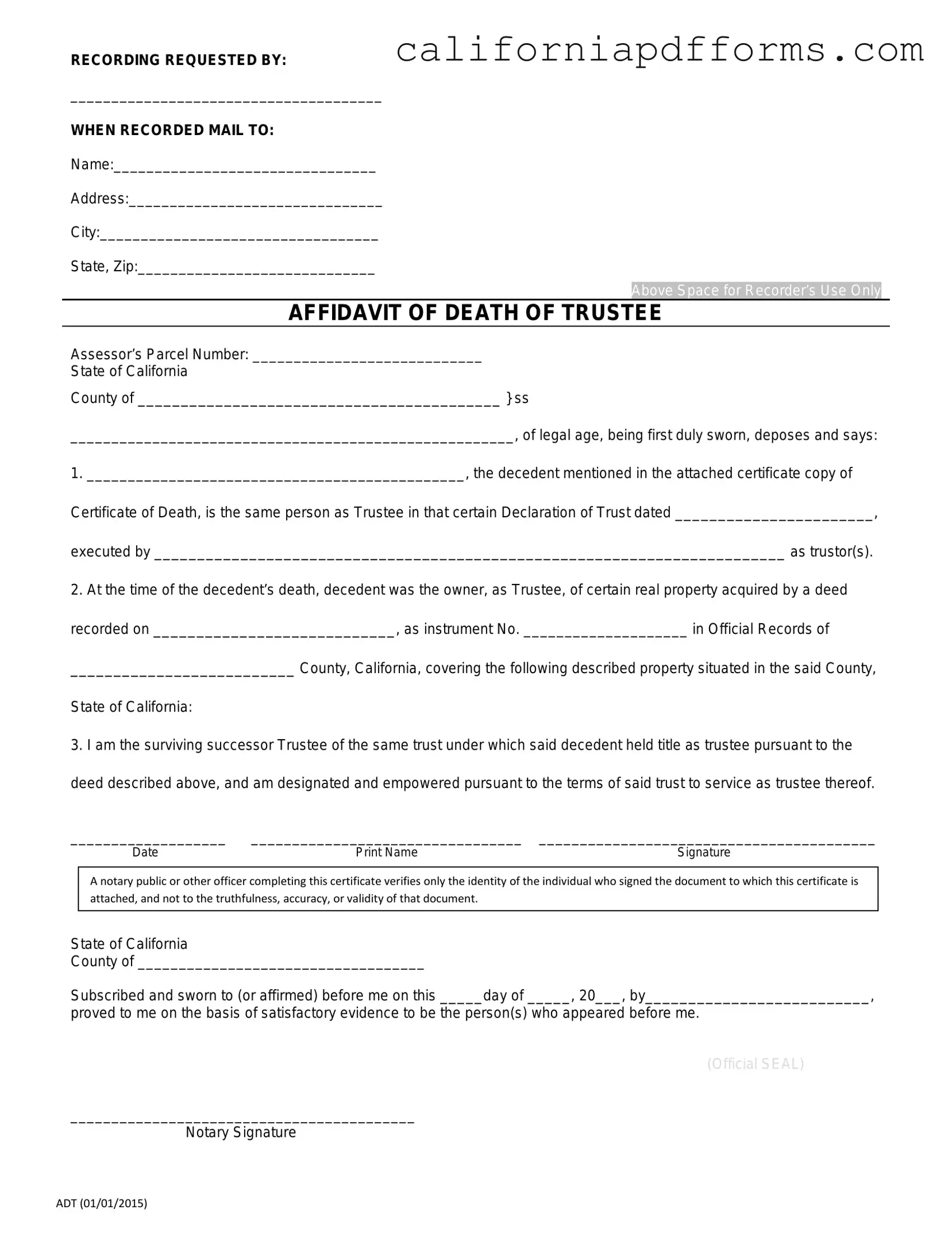Download California Affidavit of Death of a Trustee Form
The California Affidavit of Death of a Trustee form is a legal document used to officially record the death of a trustee in a trust. This form helps ensure that the trust can continue to operate smoothly and allows for the appointment of a successor trustee if needed. Understanding how to properly complete this form is essential for maintaining the integrity of the trust and its assets.
Ready to fill out the form? Click the button below to get started!
Open Your Form Online
